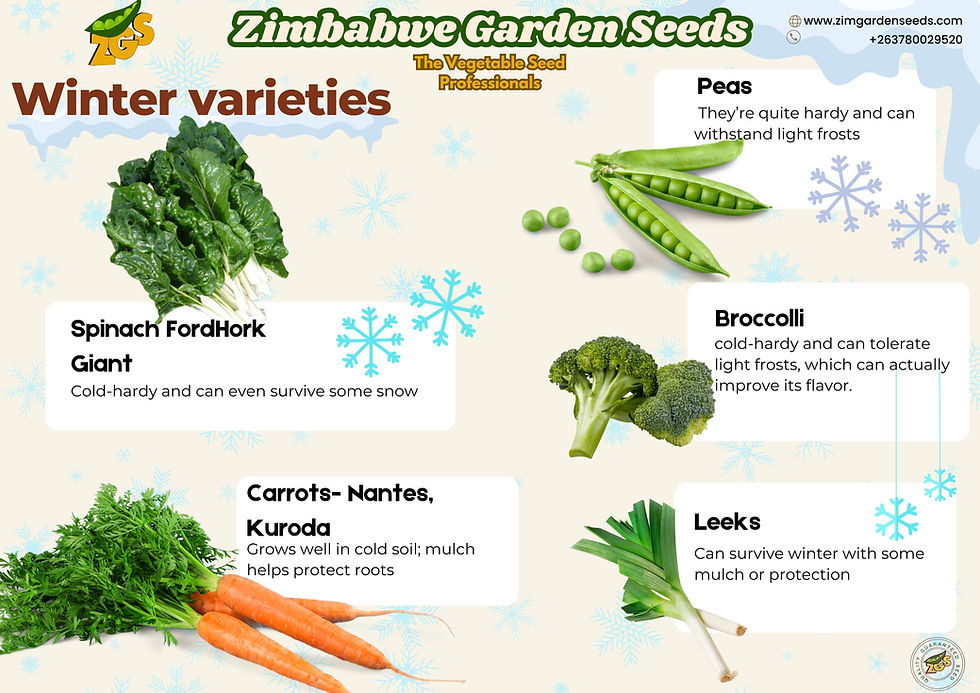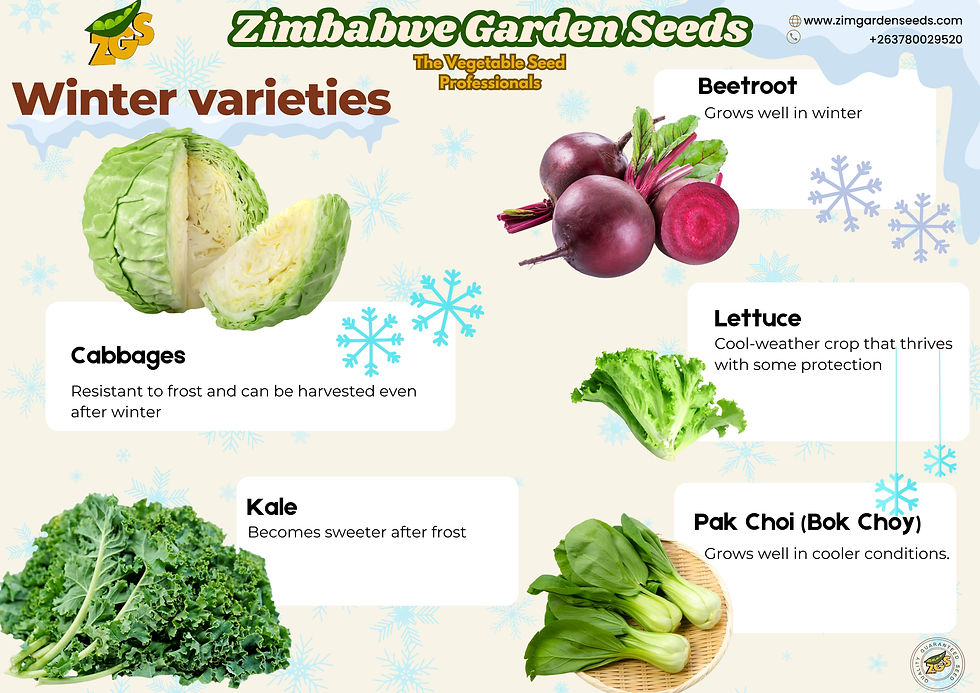As the winter months approach in Zimbabwe, many gardeners may wonder which vegetable varieties can withstand the cooler temperatures and still produce a bountiful harvest. Fortunately, several hardy vegetables are well-suited for winter cultivation in this region. This blog will explore the best winter vegetable varieties, their growing requirements, and tips for successful cultivation.
1. Leafy Greens
Leafy greens are among the best vegetables to grow in winter due to their resilience to cooler temperatures. Here are some varieties that thrive in Zimbabwe's winter:
Spinach: This nutrient-dense green grows well in cooler weather and can be harvested multiple times. Spinach prefers well-drained soil and regular watering.
Kale: Known for its hardiness, kale can survive frost and continues to grow throughout winter. It is packed with vitamins and can be used in various dishes.
Swiss Chard: This vibrant green can tolerate cold temperatures and provides a continuous harvest when picked regularly. It also adds color to winter gardens.
Mustard Greens: These leafy greens thrive in cooler weather and offer a peppery flavor. They grow quickly and can be harvested young or mature.
2. Root Vegetables
Root vegetables are excellent choices for winter gardening as they can be harvested even after frost. Here are some popular varieties:
Carrots: Carrots can be sown in late summer for a winter harvest. They develop sweetness after exposure to frost, making them a favorite for winter meals.
Beets: Beets are hardy and can be planted in late summer for winter harvest. They are versatile and can be used in salads, soups, and juices.
Radishes: Fast-growing and cold-tolerant, radishes can be sown in late fall and harvested throughout winter. They add a crunchy texture to salads.
Turnips: These root vegetables are easy to grow and can withstand cold temperatures. They can be harvested young or left to mature for larger roots.
3. Brassicas
Brassicas, or cruciferous vegetables, are known for their hardiness and nutritional value. Some varieties that do well in Zimbabwe's winter include:
Cabbage: Cabbage can be planted in late summer for a winter harvest. It is a versatile vegetable that can be used in salads, stews, and fermented dishes.
Broccoli: This nutrient-rich vegetable thrives in cooler temperatures and can be harvested in winter. It requires well-drained soil and consistent moisture.
Cauliflower: Similar to broccoli, cauliflower can be grown in winter and requires careful attention to moisture and temperature for optimal growth.
Brussels Sprouts: These small cabbage-like vegetables are perfect for winter gardens, as they develop flavor after exposure to frost.
4. Alliums
Alliums, including onions and garlic, are excellent for winter planting. They are hardy and can be harvested in the spring:
Garlic: Garlic can be planted in late winter for a summer harvest. It prefers well-drained soil and full sun.
Onions: Onions can be started from seeds or sets in winter. They require well-drained soil and consistent watering for optimal growth.
Tips for Successful Winter Gardening in Zimbabwe
Soil Preparation: Ensure the soil is rich in organic matter and well-drained. Adding compost can improve soil fertility.
Mulching: Apply a layer of mulch around plants to retain moisture and regulate soil temperature.
Watering: Maintain consistent moisture, especially during dry spells. However, avoid overwatering to prevent root rot.
Frost Protection: Use row covers or cloches to protect young plants from frost during particularly cold nights.
Companion Planting: Consider planting compatible crops together to enhance growth and deter pests.
Conclusion
Winter gardening in Zimbabwe can be highly rewarding with the right selection of vegetable varieties. Leafy greens, root vegetables, brassicas, and alliums are all excellent choices that can thrive in cooler temperatures. By following proper gardening techniques and understanding the needs of these crops, you can enjoy fresh produce throughout the winter months.


Commenti